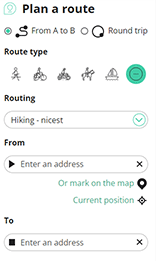

Agricultural, residential and industrial municipality of 10,694 inhabitants and 1,615 ha (1996).
Located in Zandlemig Vlaanderen. Flat relief (church sill at 17.64 m); highest point in the extreme S. on the hamlet "Hogen Doorn" (38 m) with the so-called Doornmolen. Fertile soil, intersected from W. to E. by the Mandel, also by a number of streams, including the Deve (border with Meulebeke), the Lokke- (border with Izegem), the Lendelede- and the Oudebeek (border with Hulste). In the …Read more
Source: inventaris bouwkundig erfgoed \ geheel \ gemeente
 Azure
Azure![]() | | Public | Dutch
| | Public | Dutch

Select one of the most popular activities below or refine your search.
Discover the most beautiful and popular trails in the area, carefully bundled into appropriate selections.
Select one of the most popular categories below or be inspired by our selections.
Discover the most beautiful and popular attractions in the area, carefully bundled in appropriate selections.
With RouteYou, it's easy to create your own customised maps. Simply plot your route, add waypoints or nodes, add places of interest and places to eat and drink, and then easily share it with your family and friends.
Route planner

© 2006-2025 RouteYou - www.routeyou.com
Recent commentsShow all
No comments found.